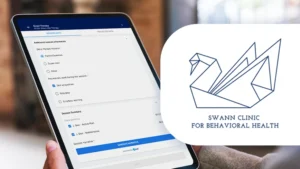Written by Amy Evans
Why is the Morningside Model so successful? The Morningside (Seattle, WA) school “has consistently produced results in learners that far exceed their historic performance. Pre- to post-test scores on nationally standardized tests reveal average growth of two grade levels for each year of instruction in reading and mathematics.”
Now that’s acceleration! This article lists the science that supports success.
Here are our top takeaways:
- Three sets of skills learners need to function in their environment
- Three sciences that teach us so much about learner achievement
- How the Standard Celeration Chart can be used during the stages of instruction
3 Sets of Skills Learners Need to Function in Their Environment
- Tool skills — skills needed to acquire higher-level skills (e.g., say letter sound)
- Component skills — skills which depend on one or more tools skills (e.g., phonetically read three-syllable word)
- Composite skills — skills that demonstrate mastery of a content area (e.g., reading a passage with expression)
3 Sciences That Teach Us So Much ABout Learner Achievement
The Morningside Model of Generative Instruction (MMGI) is our inspiration when it comes to instructional procedures, curriculum design, and frequency building — especially related to academic skills (although it relates to teaching anything). MMGI is a Precision Teaching learning technology, and it draws on multiple streams of research. Included below are principles derived from the sciences of learning, instruction, and assessment.
5 principles derived from the Science of Learning:
- Draw on the power of reinforcement, specifically, and feedback, generally
- Select effective prompts that can be withdrawn systematically and easily
- Use the delayed prompting procedure (delay for 6 seconds)
- Focus on teaching students how to learn on their own. Effective learners demonstrated generativity (see below)
- Promote generativity by applying strategy and problem-solving research (like Whimbley and Lochhead’s Think Aloud Pair Problem Solving)
5 principles derived from the Science of Instruction
- Placement of learners in groups for instruction (e.g. ability grouping)
- Task analysis (see definitions on p. 1777)
- Content analysis (e.g., Bloom’s or Tiemann & Markle’s taxonomies)
- Instructional protocols (e.g. Gilbert’s “mathetics”: demonstrate the skill, guide use, release for individual practice, delayed release)
- Principles of instructional design (e.g. analyze content area, select typology, order elements, fine-tune protocols, collect data)
3 levels derived from the Science of Assessment
- Micro-level assessment is done through Precision Teaching (PT). To reliably determine fluency, PT tracks changes in performance frequency. Changes in frequency are tracked on the Standard Celeration Chart (SCC), which represents proportional growth/decay. This frequency building leads to fluent behavior that is maintained, endures, is stable, and more (see pp. 1781-1784).
- Meta-level assessment is done with an adapted curriculum-based measurement (CBM) procedure. “Adapted CBM measures both validate the results that learners are tracking on their SCCs—their mini-level assessments—and suggest how learners are likely to perform on the macro-level assessments at the end of the year.”
- Macro-level assessments are the state-approved standardized tests.
How the Standard Celeration Chart Can Be Used During the Stages of Instruction
The article offers a wealth of information about how the above three sciences are applied. Solid instruction + practice for fluency + application and generativity create positive outcomes. And throughout the process, the Standard Celeration Chart (SCC) can be used:
- During instruction (focusing on “only one performance or skill at a time”), practitioners can use the chart for “count only” to build accuracy in the performance or skill
- During practice, the chart can be used for recording timings and frequency, to “verify the learner is improving—accelerating—at the prescribed rate.”
- During real-world application and generativity, the chart can be used to assess whether the learner really is applying skills and recombining new skills.
Reference






